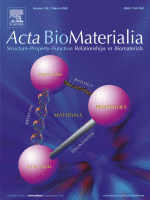
Injectable hydrogels that polymerize directly in vivo hold significant promises in clinical settings to support the repair of damaged or failing tissues. Existing systems that allow cellular and tissue ingrowth after injection are limited because of deficient porosity and lack of oxygen and nutrient diffusion inside the hydrogels. Here is reported for the first time an in vivo injectable hydrogel in which the porosity does not pre-exist but is formed concomitantly with its in situ injection by a controlled effervescent reaction. The hydrogel tailorable crosslinking, through the reaction of polyethylene glycol with lysine dendrimers, allows the mixing and injection of precursor solutions from a dual-chamber syringe while entrapping effervescently generated CO2 bubbles to form highly interconnected porous networks. The resulting structures allow preserving modular mechanical properties (from 12.7 ± 0.9 to 29.9 ± 1.7 kPa) while being cytocompatible and conducive to swift cellular attachment, proliferation, in-depth infiltration and extracellular matrix deposition. Most importantly, the subcutaneously injected porous hydrogels are biocompatible, undergo tissue remodeling and support extensive neovascularisation, which is of significant advantage for the clinical repair of damaged tissues. Thus, the porosity and injectability of the described effervescent hydrogels, together with their biocompatibility and versatility of mechanical properties, open broad perspectives for various regenerative medicine or material applications, since effervescence could be combined with a variety of other systems of swift crosslinking.